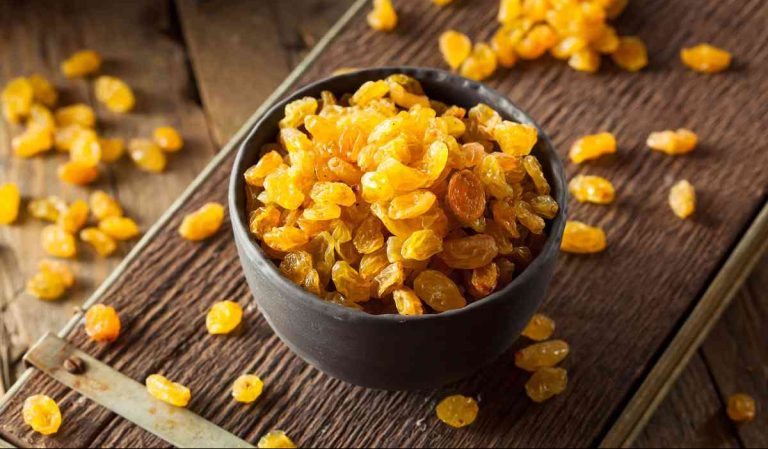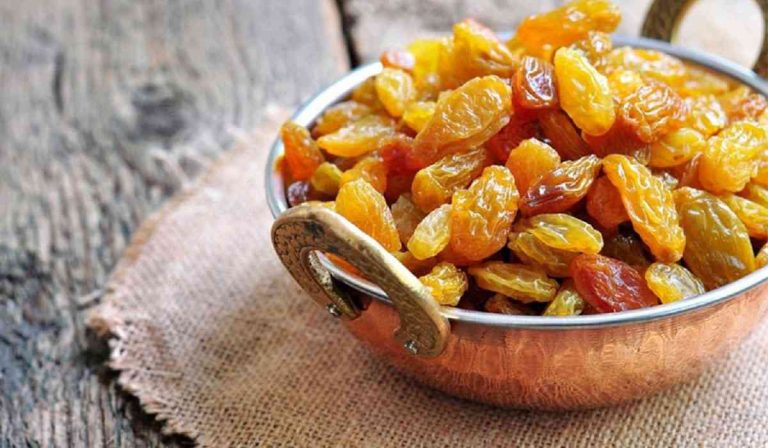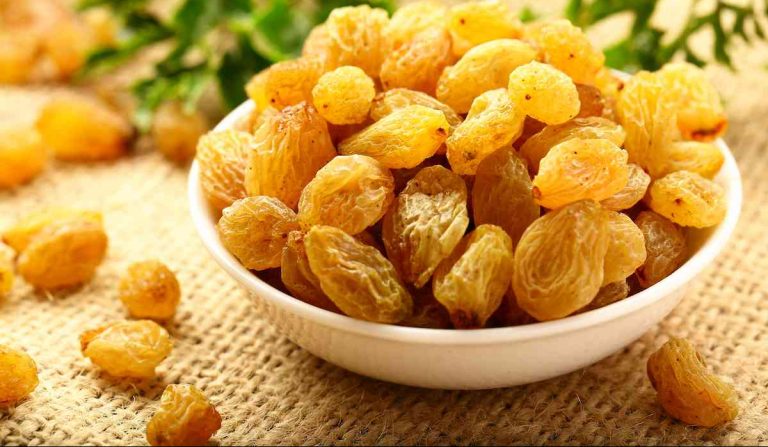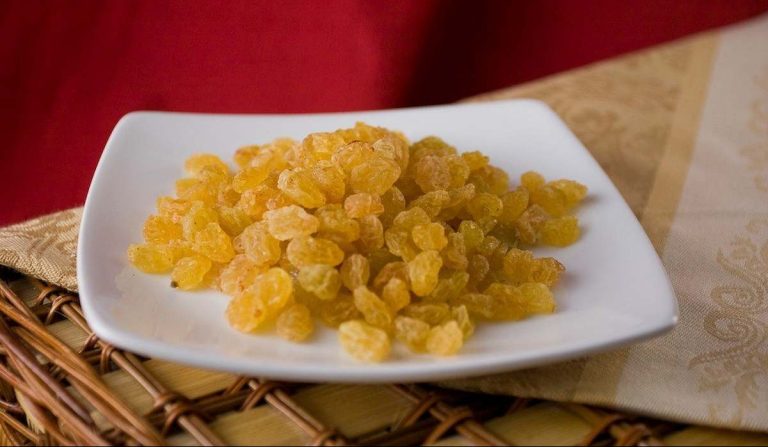Golden Raisins from Hunza Valley have a richer taste and stand out more due to their unique appearance and organic type.
This golden raisin is silky smooth and plump and a delicacy. They grow in the mineral-rich soils of the Hunza region in the Himalayas.
The amount of phytonutrients and antioxidants found in golden raisins is much higher than regular raisins.
These sun-dried raisins are 100% natural and do not contain any additives or preservatives.
Most of the raisins produced in the United States come from commercially grown Thompson green seedless grapes.
During the process of drying in the sun or in natural air conditions, they take on a dark color that is distinct from them.
The vast majority of golden raisins sold in the United States are produced from the same Thompson green grape.
These grapes are dried in industrial capacity dehydrators and often treated with sulfur dioxide to (artificially) preserve color, texture and shelf life.

The golden raisin, often known as sultana, is classified in most countries of the world, except the United States, as a different variety from its darker relatives.
There are different types of raisins, each of which is distinguished from the rest due to the type of grape used in its production and also the drying process.
Golden raisins, which are quite similar to their black counterparts, may be made from a wide range of grapes, some of which are seedless (eg Thompson, Sultana and Monocca grapes) and some of which are not.
An amazing display of this can be seen in the Hunza Raisin, which is produced using different grape varieties.
Hunza raisins are made from Sultana organic grapes, which are dried in the sun after being cultivated in Hunza for generations and used in the production of Hunza raisins.
Grapes that have been dried naturally in the heat of the sun have a stronger flavor and have the added benefit of concentrated sugars and nutrients.
The end result is a raisin that is naturally amber-gold in color and has a beautiful, soft green color.

There are many uses for our Hunza raisins. Raw, certified organic, gluten-free, and sulfite-free, with no added preservatives.
They may replace regular raisins, raisins, and other types of dried fruit in any meal, providing a sweet, rich, and subtly fruity flavor to sweet and savory dishes.
You can eat them alone or you can include them in one of these delicious meals.
Combine with your choice of hot or cold cereal such as rolled oats, overnight oats or your favorite.
Throw some trail mix into the mix.
Use salads that include bitter greens. These two flavors go well together.
Include it in dishes made with rice, couscous, quinoa, or any cooked grain, as well as salads made with cooked grains.
Include them in baked goods such as homemade raisin bread, as well as raisins, cookies, brownies, and cakes.
Create a delightful cheese board by combining them with crunchy crackers, roasted mixed nuts, and silky brie cheese.
7 Include meat or vegetable curry as a compliment.

Pancakes and waffles may be made with them.
Pour it into yogurt.
Sprinkle it on the ice cream.
As an afternoon snack, try combining some nuts or peanut butter with some dark chocolate.
You may turn them into a chutney that has many flavors.
Bake the pieces after placing them in the granola mixture of your choice.
Instead of choosing meals with long ingredient lists that are difficult to pronounce, nutritionists often advise their patients to choose foods that are minimally processed and free of additives.
Grapes that have been allowed to dry and then packed into raisins are an excellent choice.
According to an expert, since this meal is only slightly processed and does not contain any artificial additives or preservatives, it can be classified as a complete food.
However, raisins contain a fairly significant amount of sugar and calories per serving.
Raisins are dried grapes that may be consumed as food. They often appear in a shade of reddish brown, although they may sometimes have a yellow or even golden appearance.
The traditional drying process, which takes place in the open air, is responsible for giving the raisins their characteristic brown color. However, golden raisins are preserved with sulfur dioxide when dried, which gives them their characteristic golden color.

Since the grapes used in both are comparable, you might assume that the final products have nutritional profiles that are comparable.
For such a snack, raisins have amazing health benefits. “Think of all the vitamins and minerals packed into a grape in such a small container,” explains one expert.
Raisins are a good choice for a nutritious snack because the phytonutrients in them have antimicrobial as well as antioxidant benefits.
In addition to some iron and small amounts of other vitamins and minerals, a typical one-quarter cup serving contains about 300 milligrams of potassium. Other vitamins and minerals are present but in much lower concentrations.
(The National Institutes of Health recommends that people consume 4,700 milligrams of potassium daily.)

According to this knowledgeable source, the magnesium in raisins is beneficial for the health of the heart, nerves and muscles. Additionally, about two grams of fiber may be found in a serving of dehydrated grapes.
However, it should be noted that raisins are also an excellent source of calories. A serving is only about 130 calories, which may be too much for a light meal or snack.
Eating dried grapes is not nearly as satisfying per calorie as eating fresh grapes or other fruits, because dried grapes do not contain nearly as much water as fresh grapes.
When it comes to distributing raisins at the wholesale level, no one does it better than us. We work with a number of clients and partners from other countries.
And everything is ready for us to be able to participate in the market of selling and exporting significant amounts of raisins.
We are committed to providing services that are not only authentic, but also at the cutting edge of excellence as a means of advancing not only our business but also our position as a raisin supplier.










